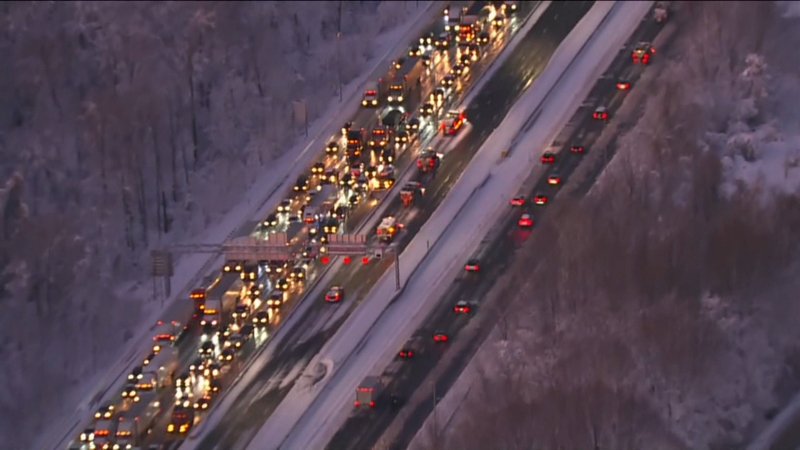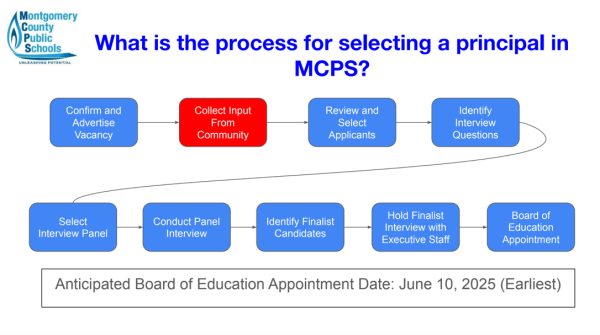I-95 crash strands hundreds in freezing temperatures without food, water
Photo courtesy ABC, used with permission from Google Commons
Hundreds of drivers are stuck bumper-to-bumper on I-95 on Jan. 3. The highway won’t clear until tomorrow morning.
Drivers were stuck on Interstate Highway 95 without food, water, or a bathroom for upwards of 16 hours on Jan. 3. The road was in poor condition after heavy snowfall the night before, so multiple tractor trailers jackknifed on the road, stopping traffic for 50 miles.
Being stranded on the highway for over 16 hours is dangerous because cars need fuel to stay running. A common fear amongst drivers was running out of gas, and therefore not being able to heat their car or drive away when the road finally cleared. “I would rather freeze than run out of gas and literally not know when we were going to get to move,” stranded North Carolinian driver Taylor Mooney told CBS.
Temperature was another major concern of those stranded on the road. Keeping the heat on the whole time would run a car out of fuel, but with temperatures below freezing, turning it off plunged drivers into the cold. “You have to figure out the strategy, and it’s like, turn on the heater full blast, heat the car up, turn it off and then try to catch some sleep,” Virginia Senator Tim Kaine, who got stuck on his commute to D.C., said on a phone interview with CNN. “In about 20 or 30 minutes it gets so cold in the car, then you have to do it again.”
Kaine found himself stuck in the jam on his drive to work. He later tweeted that he left his house at 1 p.m. on Jan. 3, for what he assumed would be a two-hour commute, and did not arrive at his office until 27 hours later. “At some point it switched from a miserable travel day into kind of a survival mode day for me,” Kaine said. “And, you know, the roads are incredibly slick, and my car is sliding around, and I don’t have food or drink in my car, so I was more focused on, ‘OK, how do I safely get out of this mess’.”
Another danger facing the stuck drivers was running out of food and water. Vacationing families equipped with snacks for a long car-ride were protected, but commuters like Kaine weren’t so lucky. “I do have some popcorn in the car,” Kaine told CNN from his car. “But to eat popcorn without any liquid, I don’t think that’s a good idea, so now that I’m 90 minutes from the office, I’m planning on eating a lot and using the restroom as soon as I pull in.”
Cars and trucks were nearly packed bumper-to-bumper, unmoving as far as the eye could see. Most people stayed in their cars, but others abandoned their cars and walked through the snowy highway shoulder in an attempt to get somewhere. “I can imagine how frustrating and scary it might have been,” junior Rachel Nanos said. “One time I was stuck in really bad traffic because a train was stopped on some train tracks that I usually go over on my way to school. I was in the middle lane, so I had to wait for a long time to be able to turn onto a different road. The whole experience was frustrating.”
Students who weren’t involved in the traffic jam empathize with the stranded drivers. “Being stuck in traffic can be really frustrating,” senior Jayne Samborn agreed with Nanos. “Everybody has places to be, so they tend to only think about getting themselves to their destination, which makes all the other drivers more stressed.”
The blockage on I-95 can also be compared to the intense traffic here at school. “I have an internship, so I don’t experience [the parking lot] much,” Samborn said. “But the few times I have were awful. I once spent 20 minutes in my spot, trying to get out. Eventually I was halfway out, but still couldn’t get out. Once I did, it was standstill traffic trying to maneuver around the lot.”
Your donation will support the student journalists of Thomas S. Wootton High School. Your contribution will allow us to purchase equipment and cover our annual website hosting costs.
Catie is a 2023 graduate.







